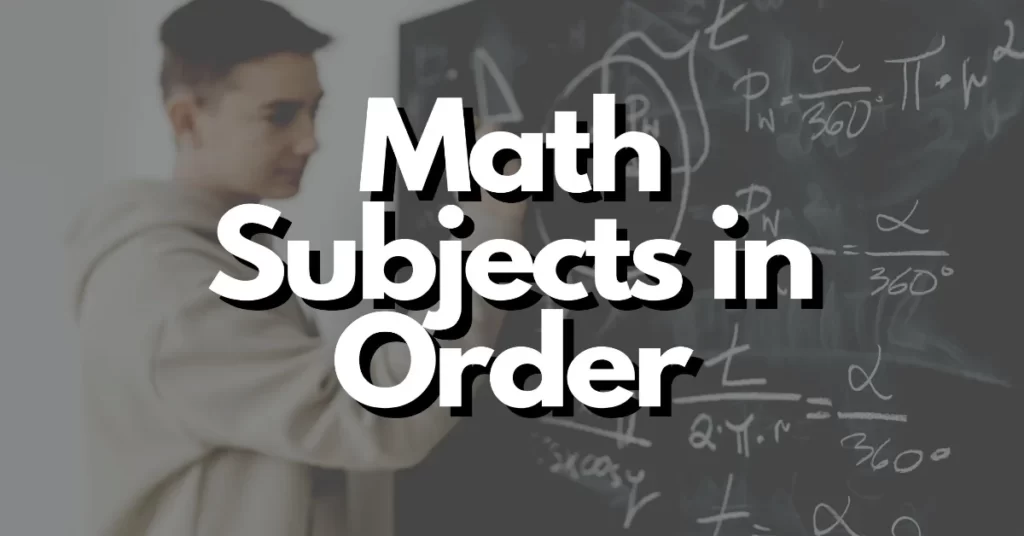Mathematics is an essential subject in school curriculums and serves as a building block for many higher education and career paths. It’s no secret that math can be a challenging subject for many students, but understanding the typical order in which math subjects are taught can help alleviate some of that stress.
This article will provide insight into the standard sequence in which students typically take math classes from year to year in school. From foundational arithmetic and algebra to more advanced topics like geometry and calculus, we’ll explore each step in the journey of math education.
By understanding the progression of math classes, students and parents can better prepare for what lies ahead and ensure they are adequately equipped to succeed in each course.
The importance of foundational math skills
The importance of foundational math skills cannot be overstated. These skills serve as the building blocks for more advanced mathematical concepts and applications. Without a strong foundation, students may struggle to grasp higher-level math concepts and face difficulties in various academic and professional pursuits.
Arithmetic and Pre-Algebra: The First Steps
Arithmetic and pre-algebra form the bedrock of math education. Arithmetic focuses on basic operations such as addition, subtraction, multiplication, and division. It develops students’ number sense and computational skills. Pre-algebra introduces the concept of variables, equations, and inequalities, preparing students for more complex algebraic concepts.
Proficiency in arithmetic and pre-algebra is crucial for understanding and solving more advanced mathematical problems.
Algebra: Building on the Basics
Algebra builds upon arithmetic and pre-algebra, introducing students to abstract thinking and problem-solving. It involves working with variables, equations, functions, and graphs. Algebra develops critical thinking skills, logical reasoning, and the ability to analyze patterns and relationships.
Mastery of algebra is essential for further mathematical study and applications in fields like science, engineering, and finance.
Geometry: Visualizing Mathematics
Geometry explores the properties of shapes, angles, and spatial relationships. It allows students to visualize mathematical concepts and apply them to real-world scenarios. Geometry develops spatial reasoning, logical deduction, and proof-writing skills. It is particularly important for fields such as architecture, engineering, and design, where understanding shapes and spatial arrangements is essential.
Calculus: The Advanced Frontier
Calculus is the study of change and motion. It encompasses differential calculus, which focuses on rates of change and derivatives, and integral calculus, which deals with accumulation and integration.
Calculus is used extensively in fields such as physics, engineering, economics, and computer science. It enables students to solve complex problems, analyze functions, and model real-world phenomena. Proficiency in calculus opens doors to advanced academic and career opportunities.
Conclusion
While the order in which math subjects are taught can vary slightly from school to school and district to district, the fundamental concepts and progression of mathematical knowledge remain consistent.
By understanding the typical sequence of math courses, students can approach their education with more confidence and prepare themselves for future academic and career opportunities.
With dedication and hard work, students can master the complexities of mathematics and develop a lifelong appreciation for the subject.

